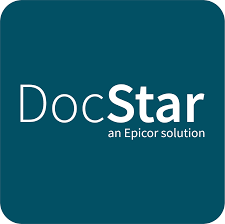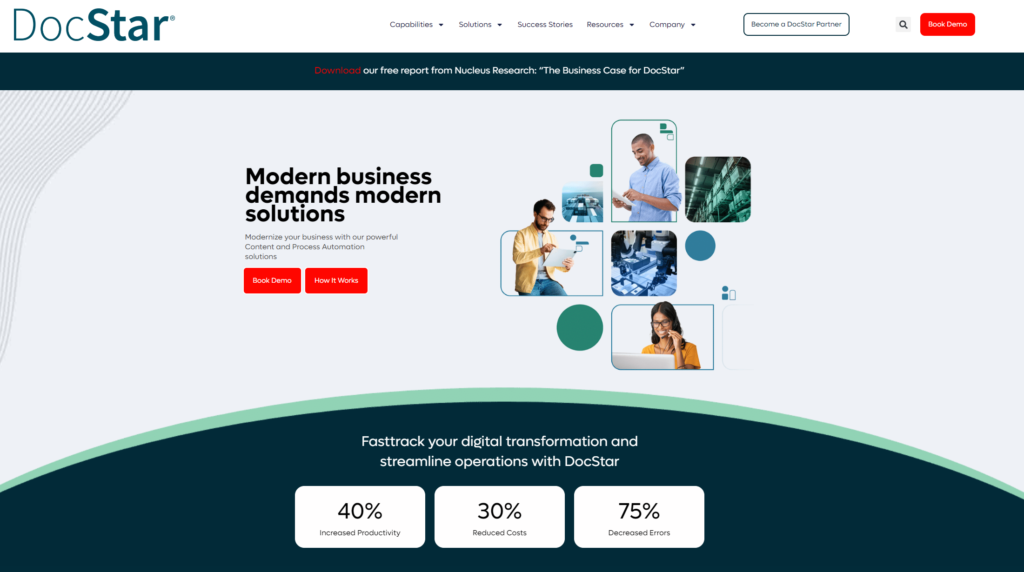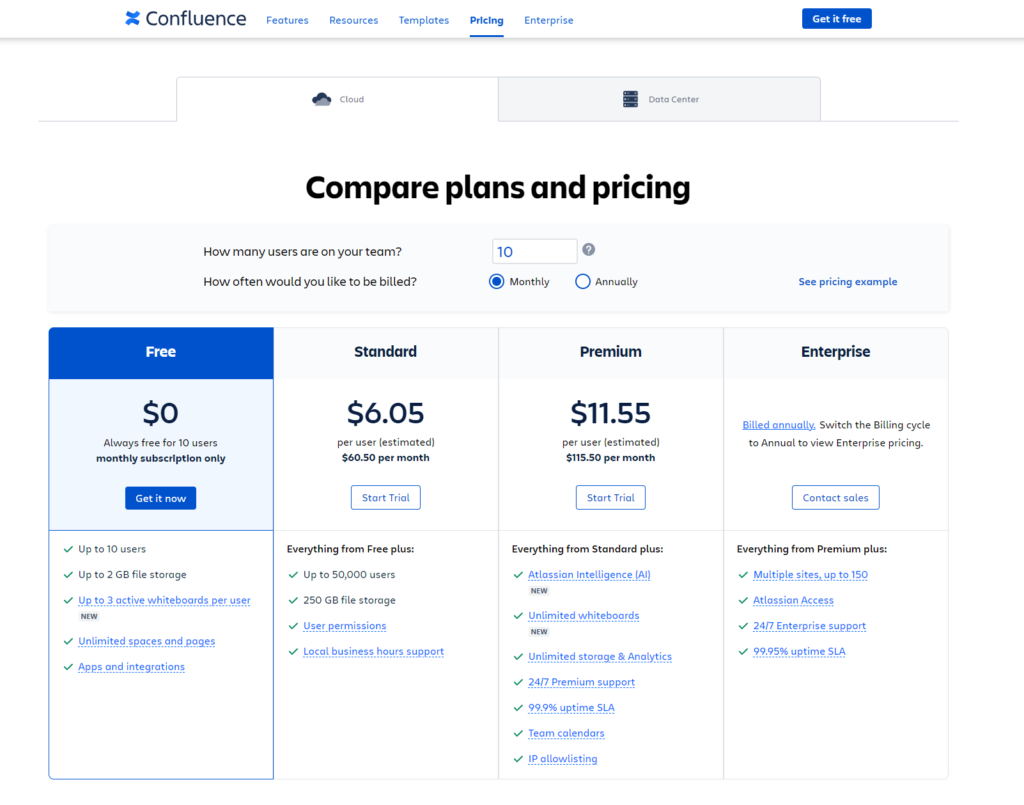Choosing the right document management tool can dramatically enhance your team’s efficiency and streamline your business operations. Today, we delve into a detailed comparison between DocStar and Confluence, two prominent solutions in the document management landscape. Each platform offers unique functionalities designed to cater to different organizational needs. Let’s begin by examining how each system handles document storage and retrieval capabilities.
DocStar | Confluence |
|---|---|
| G2 Score – 3.7 out of 5 stars | G2 Score – 4.1 out of 5 stars |
| TrustRadius Score – 4.7/10 | TrustRadius Score – 8.1/10 |
Document Storage and Retrieval Capabilities
When it comes to managing documents, the efficiency of storing and retrieving files is a crucial factor for any business. DocStar and Confluence offer distinct approaches to document management, each with its strengths and considerations.
DocStar: Structured Document Management
DocStar is renowned for its robust document storage and retrieval system, designed with precision and control in mind. It provides a highly structured way to organize documents, making it ideal for businesses that deal with a large volume of files and require strict categorization and archiving processes. DocStar’s system is built on a traditional folder-based hierarchy, which can be customized to fit the specific needs of any organization.
One of the key strengths of DocStar is its powerful search functionality. It allows users to quickly locate documents based on a variety of criteria, including metadata, content, and document type. This feature is particularly beneficial in environments where time-sensitive access to accurate information is crucial, such as legal or financial services.
Moreover, DocStar enhances document retrieval with version control and audit trails, ensuring that users can track changes over time and access previous versions of documents effortlessly. This level of detail supports compliance and adds an extra layer of security to document handling.
Confluence: Collaborative Document Management
Confluence, on the other hand, takes a more collaborative approach to document management. While it also offers structured storage options, its strength lies in its ability to facilitate seamless collaboration among team members. Confluence integrates document management with workspace tools, allowing users to create, store, and collaboratively edit documents in real-time.
Unlike DocStar, Confluence structures documents in a more fluid, interconnected way. It uses pages and spaces, rather than traditional folders, enabling users to organize content in a dynamic, accessible format that promotes visibility and interaction across the team. This setup is particularly advantageous for projects that require ongoing collaboration and updates, such as software development or content creation.
Confluence also offers powerful search capabilities, but with a focus on content discovery and team-based workflow integration. Users can tag pages or embed documents within other content, making it easy to find information through contextual links and collaborative trails.
Integration Capabilities
In today’s interconnected digital landscape, the ability of a document management system (DMS) to integrate seamlessly with other business tools is crucial. This integration can enhance productivity and ensure smooth workflows. Let’s examine how DocStar and Confluence perform in terms of their integration capabilities with other software systems.
DocStar: Seamless Integration with Enterprise Systems
DocStar stands out for its robust integration capabilities, particularly with enterprise resource planning (ERP) systems and other critical business applications. This integration is a significant advantage for organizations that operate within complex software ecosystems and require their DMS to work in concert with other tools. DocStar’s integration extends to popular platforms like Microsoft Dynamics, SAP, and Oracle, facilitating a streamlined workflow that can handle complex document processing tasks.
The advantage of DocStar’s approach to integration is its ability to support automated processes such as invoice processing, records management, and compliance tracking directly within the DMS. This level of integration is particularly useful for industries such as manufacturing, healthcare, and government, where documents must be closely linked to other operational processes.
Furthermore, DocStar offers API access for custom integrations, allowing organizations to tailor the DMS to their specific needs. This flexibility is invaluable for businesses that require unique solutions or need to integrate their DMS with niche or proprietary software.
Confluence: Integration with Collaboration and Productivity Tools
Confluence, developed by Atlassian, naturally integrates well with other Atlassian products like Jira and Trello, making it an excellent choice for software development teams and project managers who already use these tools. This integration supports a cohesive workflow where documents, project tasks, and development cycles are interconnected.
Beyond Atlassian’s ecosystem, Confluence offers integration with a wide range of third-party apps through the Atlassian Marketplace. This includes tools for CRM, communication, and content creation, which enhance Confluence’s functionality as a collaborative workspace. These integrations are particularly beneficial for teams that rely on agility and collaboration, enabling them to access a variety of tools directly within the Confluence environment.

Related: Check out our free SEO suite

Security and Compliance Features
In the realm of document management, security and compliance are not just features; they are necessities. Both DocStar and Confluence take these aspects seriously, but they offer different approaches and tools to address these critical needs. Understanding how each system handles security and compliance will help you decide which one aligns best with your organization’s requirements.
DocStar: Robust Security and Rigorous Compliance
DocStar is designed with a focus on security and compliance, making it a strong choice for industries that are heavily regulated, such as healthcare, finance, and government. It employs rigorous security measures including encryption of data both in transit and at rest, ensuring that all documents are protected from unauthorized access.
One of the standout features of DocStar is its comprehensive compliance management capabilities. The system supports compliance with major regulations such as HIPAA, GDPR, and Sarbanes-Oxley. DocStar helps organizations manage their compliance needs by providing detailed audit trails, controlled access, and retention policies that automate the lifecycle of documents according to legal and regulatory requirements. These features are crucial for maintaining compliance and minimizing risk in industries where document control is subject to strict regulations.
Confluence: Flexible Security with Collaborative Focus
While Confluence also provides strong security features, its approach is more tailored towards facilitating collaboration in a secure environment. Confluence uses encryption to protect data and offers robust access control settings that administrators can use to manage user permissions, ensuring that sensitive information is only accessible to authorized personnel.
In terms of compliance, Confluence is designed to support teams in maintaining best practices with data security and management, but it does not inherently focus on specific regulatory compliance as DocStar does. However, Confluence can be configured to enhance compliance through add-ons and integrations available in the Atlassian Marketplace, which can help bridge any gaps in specific compliance requirements.
User Experience and Mobile Accessibility
User experience (UX) and mobile accessibility are increasingly important in today’s fast-paced, mobile-first world. Effective document management is not just about storing and retrieving information but also about how easily and efficiently users can interact with the system across various devices. Let’s delve into how DocStar and Confluence stack up in providing a user-friendly experience and mobile support.
DocStar: Intuitive User Interface with Strong Mobile Capabilities
DocStar is designed with an intuitive user interface that aims to reduce the learning curve and facilitate quick adoption among new users. The platform mimics a traditional file system with a modern twist, making navigation and document handling familiar yet efficient. This design approach helps users manage documents effectively without extensive training.
In terms of mobile accessibility, DocStar offers a robust mobile app that extends the core functionalities of the desktop environment to mobile devices. This app allows users to access, manage, and even approve documents on the go. Such mobile capabilities are crucial for businesses that need to ensure continuity of operations regardless of location, providing flexibility for remote or traveling employees.
Confluence: Collaborative and Engaging User Experience
Confluence, meanwhile, focuses heavily on creating an engaging and collaborative user experience. The platform is designed as an open and connected workspace where documents and content can be easily created, shared, and collaborated on in real-time. Its interface promotes usability with features like drag-and-drop editing, inline comments, and dynamic content management, which enhance team collaboration and document handling.
On the mobile front, Confluence provides a seamless experience with apps that support both iOS and Android devices. The mobile apps are particularly geared towards collaboration, allowing users to access spaces, pages, and documents, and to communicate with team members through comments and mentions. This mobile integration ensures that team collaboration is fluid and continuous, even without access to a desktop.
Pricing and Overall Value
Evaluating the cost-effectiveness of a document management system (DMS) is crucial for ensuring that the investment aligns with your budget constraints and delivers the desired value to your organization. Let’s look into the pricing structures of DocStar and Confluence and assess the overall value they provide.
DocStar: Flexible Pricing with Customization Options

DocStar offers a flexible pricing model that typically varies based on the specific needs and scale of the organization. It generally includes an upfront cost for software licensing along with additional fees for customization, integration, and ongoing support. This model allows organizations to tailor the system to their exact requirements, whether they need a basic setup or a complex, highly customized implementation.
The value of DocStar comes from its robust feature set, which includes advanced document capture, management, automated workflows, and strong compliance tools. For organizations in industries such as finance, healthcare, or government, where compliance and efficient document processing are crucial, DocStar’s ability to deliver customized solutions provides a high return on investment.
Confluence: Subscription-Based Pricing for Scalability

Confluence utilizes a subscription-based pricing model, which is common for cloud-based platforms. This model offers various tiers, starting from a basic free version suitable for small teams, to more advanced plans that cater to larger organizations with additional features and support. This approach allows businesses of all sizes to scale their usage as they grow or as their needs evolve, making Confluence a flexible option for startups to large enterprises.
The value of Confluence lies in its collaborative features and ease of use, which can significantly enhance productivity across teams. Particularly for organizations that rely on team collaboration and project management, Confluence’s integrated tools for content creation and project tracking provide considerable value, reducing the need for multiple disparate tools.
Conclusion
In conclusion, when choosing between DocStar and Confluence for your document management needs, consider the specific demands of your organization and the core functionalities each platform offers.
DocStar excels in providing a robust, customizable solution tailored for industries that require stringent document control, compliance, and efficient processing. Its flexible pricing model, although potentially costly upfront, is justified by the system’s ability to handle complex workflows and regulatory requirements. This makes DocStar ideal for larger enterprises or organizations in regulated sectors like finance, healthcare, and government.
Confluence, on the other hand, shines as a collaborative, user-friendly platform suited for teams that prioritize flexibility and seamless integration within their workflows. Its subscription-based pricing offers affordability and scalability, making it a great option for small to large businesses, particularly those in creative, tech, or project-based industries. Confluence’s strength lies in enhancing team collaboration and project management, integrating document handling with dynamic content creation and team communication.
Read Next:
- GetResponse vs Zoho Campaigns: The Best Email Marketing Tool for 2024
- AWeber vs ActiveCampaign: The Best Email Marketing Tool
- Constant Contact vs Campaigner: Best Email Marketing Tool
- GetResponse vs Omnisend: The Best Email Marketing Tool for 2024
- AWeber vs Benchmark Email: The Best Email Marketing Tool






















Comments are closed.